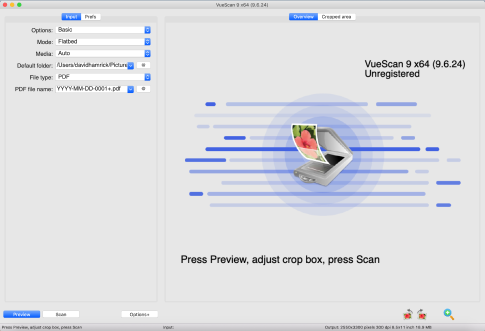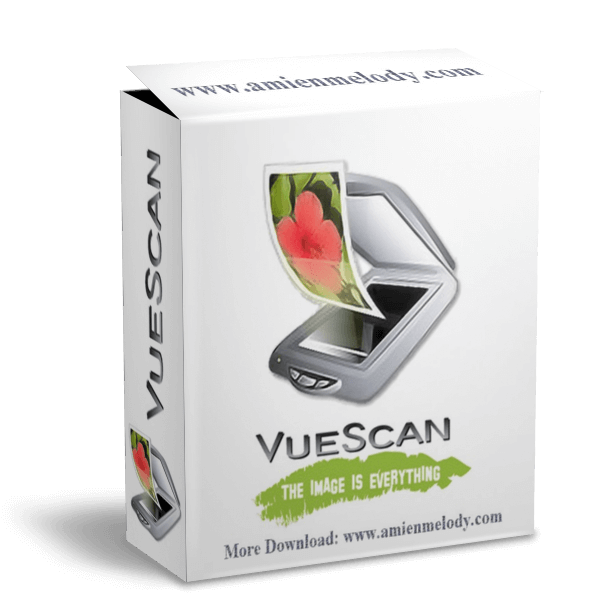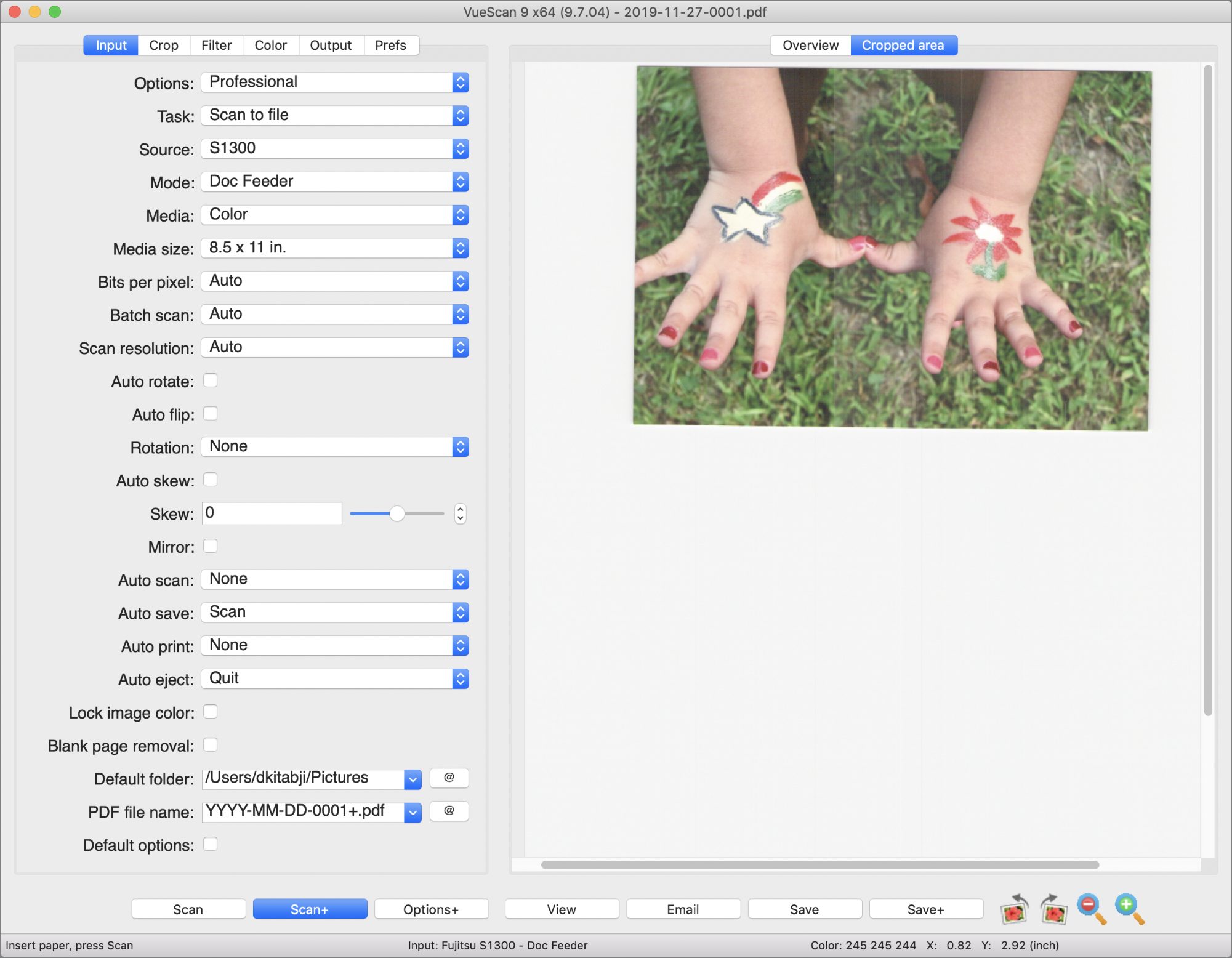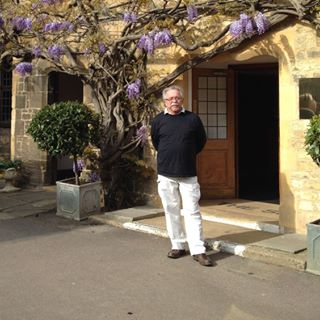Video tutorial on increasing the quality of your slide and negative scans from VueScan Professional with ColorPerfect! Find out more about how to scan with VueScan. ColorPerfect processes scans with color integrity and gives unprecedented flexibility in creative image editing. To harness the full potential of our Photoshop Plug-in it's important to obtain image data that has been subjected to as little processing as possible (RAW data). The following video tutorial gives a step by step explanation on how to achieve this with VueScan Professional.
Would you like to read SUBTITLES or share it with your friends on YouTube?
This video is available both from our site and on YouTube. Each has its benefits. Our video player's color rendition might be better and our chapter navigation isn't available on YouTube. The advantages of YouTube are that we added our transcript as subtitles to the video and that you can share it with your friends. Switch to the YouTube version of this video.Switch to the YouTube version.Switch back to the non-YouTube version.
VueScan 9 Features. The latest version of VueScan is 9.7.11, and as we've been using this software over the last month, it's been updated two or three times. Super nice scanning software, saved me from buying a new scanner. Fujitsu refuses to support my old - still perfectly working - scanner on Mac OS Catalina, but VueScan brought it back to life. It even offers more settings and is much faster than the original software. Thank you so much, Hamrick Software, you made my day! See review on Facebook. Downoad VueScan Pro 9.7.35 (x86 & x64) Multilingual Portable + Pre-Activated Torrent with Crack, Cracked FTUApps.Dev VueScan Pro is a powerful scanning application that allows you to acquire high-quality images using a flatbed or film scanner. If you are not satisfied with the software delivered by the scanner vendor or if you want to improve it with new functions you should try this program.
Vuescan free download - VueScan (64-bit), VueScan (Classic), VueScan for Linux, and many more programs.
VIDEO TUTORIAL TRANSCRIPT:
Using VueScan Professional and ColorPerfect
In this video I'd like to illustrate how to create linear scans using Hamrick Software's Vuescan as is required when inverting negatives with ColorPerfect's ColorNeg mode. In case your copy of Vuescan is currently in guided mode you need to switch to advanced mode. Once in advanced mode you need to click the more button to gain access to the more advance features. Don't be alarmed we are not going to use all of these. We just need to configure a handful of options on both the input and the output tabs.
Settings on Vuescan's input tab
Let's start with selecting our scanner. I have a Nikon Coolscan 9000 multi format scanner connected to the computer so I choose that. Next set the media to color negative and after that select 48 bit RGB under bits per pixel and change the resolution of your scan. I chose 4000 dpi as my scan resolution as I am going to scan for archival purposes and 4000 dpi is the maximum optical resolution my scanner is capable of. This completes the mandatory settings on the input tab. There are a few other settings that can be used when scanning negatives using film scanners - for example multi sampling or analog gains and those are discussed on our web page on using Vuescan for ColorPerfect.
Settings on Vuescan's output tab

So let's switch to the output tab. On the output tab make sure that all checkboxes other than RAW file are off. This means that Vuescan is going to write the data it gets from the scanner directly into a Tiff file and we will have to set up what kind of a Tiff file this is going to be. You need to choose either 48 bit RGB or 64 bit RGBI in case you would like to get an additional channel with the information captured by the scanner's infrared light source. In most cases 48 bit RGB will be fine.
Removal of dust and scratches (part 1)
If your scanner has an infrared light source which can be used in algorithms designed for the automated removal of dust and scratches you can use Vuescan's dust and scratch removal feature. In order to do so you first have to change the value for RAW output with from scan to save because otherwise the infrared cleaning will not get applied to your RAW scans.
Vuescan's DNG output format (don't use it)
When creating RAW scans for ColorPerfect make sure that you do not scan in the RAW DNG format offered by Vuescan. If you previously scanned a lot of files in the DNG format that is no problem. Our auxiliary program MakeTiff allows you to convert such DNG files to Tiff files that are suitable for processing with ColorPerfect's ColorNeg mode. The difference between a DNG file and a Tiff file simply is that a Tiff file can be opened in Photoshop without any mandatory processing.

Removal of dust and scratches (part 2)
Since I mentioned the automated removal of dust and scratches let me show you how to set that up. You will find the according options on the filter tab so we can set infrared clean to either light, medium or heavy. For the image at hand I'm going to choose medium.
Performing the pre-scan
This completes the set of options we can choose in Vuescan so let's perform a preview scan. While what we see in the preview area is already inverted the final result - the RAW scan or linear scan - will not be. It will still be in color negative form as we intend to invert it using ColorPerfect's ColorNeg mode. In the preview area we can set up the frame we would like to scan.
Performing the actual scan
Having made this selection just press the scan button.
Saving your settings in Vuescan
You can save your settings used in creating this scan and re-apply them to future scans. Just choose file > save options > linear scan. In the future we could always use the load options feature and re-apply our linear scan settings file. This is really all there is to the basics of creating linear scans using Vuescan.

Increase the quality of your slide and negative scans from VueScan Professional with ColorPerfect! Find out more about how to scan with VueScan. ColorPerfect processes scans with color integrity and gives unprecedented flexibility in creative image editing. To harness the full potential of our Photoshop Plug-in it's important to obtain image data that has been subjected to as little processing as possible (RAW data). The following tutorial gives a step by step explanation on how to achieve this with VueScan Professional. Also watch our video tutorial on creating linear scans with Vuescan.

Creating linear scans of slides and negatives with VueScan Professional
Vuescan Catalina Reviews
Hamrick Software's VueScan Professional is very well suited to create linear scans of slides and negatives since the professional version of VueScan features a special RAW output mode. To create suitable scans you first have to select the input tab and to choose either slide or color negative from the media pulldown list.
For both choices a negative is preserved as such in a RAW scan's linear output file. The difference between the two modes in combination with RAW scans is that for color negative mode the three color channels of a scan are being scaled up using suitable factors to ensure that all of these use the same range of values. Since Photoshop actually uses only 15 bit plus 1 value precision instead of the full 16 bit range used in a linear Tiff file that kind of scaling can be beneficial. If you are not using the advanced techniques of exposure control or analog gain detailed further down on this page you should choose color negative as your medium for negative scans. When scanning slides this mode could also be beneficial when scanning film with noticeable color casts. E.g. a daylight scene shot on tungsten film without filtration or vice versa.
Then select the required bit depth which is controlled by the setting 'Bits per pixel'. Set this to '48 bit RGB' which equals 16 bit per channel. The resolution of the scan is also being defined on the input tab. When scanning for archival purposes it is recommended that you use the full physical resolution your scanner is capable of. In the example screen shots a Nikon Super Coolscan LS 8000 is used which is able to scan at 4000 dpi. If your scanner supports multi sampling that may be used to further improve the scan's quality where needed. You can specify this under the 'Number of samples' option which is only visible if this feature is available for your hardware. Using multi sampling on color negatives is generally beneficial since the darkest areas of such transparencies contain a lot of important detail while any dark areas are especially prone to noise. The noise that occurs at random in a single sample scan can be reduced by taking multiple samples because such noise will not occur in the same places between different samples.
Putting out RAW Tiff files
Next select the output tab and deactivate the standard Tiff file output while activating RAW file output. Both modes write Tiff files. The normal Tiff files however are images edited and gamma encoded by VueScan while those of the RAW output mode are of linear gamma and are always equivalent to the light intensities read in by the scanner. That is the scan of a negative always remains a negative in a RAW output file and is therefore ideally suited for later conversion with ColorPerfect's ColorNeg mode or the original ColorNeg plug-in.
It is important that you do create linear Tiff files and not linear DNG files. It is not possible to open a DNG file with Photoshop without going through Adobe Camera RAW which does not allow linear output. The only way to open the unaltered linear data as saved by VueScan with Photoshop is by use of linear Tiff files. Therefore you need to make sure that the option 'RAW DNG format' is left unchecked.
If you have created such linear DNG files with VueScan by accident or in the past that is not a problem. You can convert large numbers of such files to the Tiff format using the freeware command line RAW converter dcraw. Command: dcraw -T -4 -D *.dng
Black and white (grayscale) linear scans
To create linear 16 bit grayscale scans generally follow the instructions of the two paragraphs above but instead of choosing 'Color Negative' for the Media setting on the Input tab choose 'B+W Negative'. Also make sure that the 'RAW file type' setting on the Output tab is set to Auto or '16 bit Gray'. For scanning black and white negatives ignore the following two paragraphs of this page. In particular make sure that the 'Infrared clean' feature on the Filter tab is disabled by setting it to None. The underlying technology does not work for black and white negative film because of its silver halide clusters being opaque to the infrared light source used - just as dust and scratches would be.
Removal of dust and scratches and putting out a suitable alpha channel if desired
If your scanner features a function to remove dust and scratches you can also put out the alpha channel produced by use of the respective infrared light source. To do so you have to set the RAW file type to '64 bit RGBI'. This kind of alpha channel can later be used in retouching an image. If you don't need this kind of data set the RAW file type to '48 bit RGB' instead.
If you want VueScan to remove dust and scratches automatically you can activate the option infrared cleaning which is located on the filter tab. Simply set this to the desired strength. To apply such corrections to RAW scans you additionally have to modify the setting 'RAW output with' on the output tab. The default for this is Scan which means that the RAW data is already being written to file during scanning. While doing so VueScan does not process the RAW data at all so that any settings you made on the filter tab are being ignored. If you specify Save instead of Scan the RAW data is written after the scan finishes and has been processed according to your settings on the filter tab. This mode is a bit slower but is required if you want VueScan to apply infrared cleaning to your linear Tiff files before saving them to disk.
Improving quality using exposure control and/or analog gain
The level of detail captured during scanning is of importance to the final image's quality. For some scanners further options that can be of interest are available on the input tab. This is the case if your scanner hardware supports variable exposure settings. If that is so check the option 'Lock exposure' and create a test scan using an arbitrary color negative. To observe the effect of your settings on the linear Tiff file choose slide from the media pull down list instead of choosing color negative as instructed above. This way VueScan will not scale the individual color channels and you can easily observe the effect of different exposure settings in Photoshop. Increase the exposure in a series of test scans and find the setting for which the data of the red color channel populates half to three fourths of the red channel's histogram in Photoshop.
Vuescan Mac Catalina Crack
Some scanners like Nikon's Coolscan models allow different exposure settings for the individual color channels. This is generally referred to as analog gain. With this tool you can reduce or even eliminate a color negative's orange mask at the time of scanning. In a typical color negative scan the red color channel is brightest. The green channel usually is more than 1 exposure value (EV) darker and the blue channel is 1 EV darker still. Canceling out these differences by suitable adjustments increases the level of detail captured. In VueScan analog gain values are not specified in terms of EVs but rather as factors. Start by setting Green to 2.5 and Blue to 4.0 for your test scan. As shown for an exemplary negative these settings should lead to roughly equally distributed data in the individual color channels' histograms. Should this not be the case find the right factors in further test scans. It is important that no clipping occurs at the right of the histograms and that you do leave some room so that no clipping will occur for other negatives either. If a bit of free space in the film holder next to a negative leads to a white area in your scan that is irrelevant of course. Populating somewhere above half of a linear scan's histogram bins is usually sufficient as the right half of the histogram represents just a single EV. Once you have found suitable exposure settings you can usually use the same settings on all negatives with a similar orange mask. A completely unexposed portion of the film base always is the brightest point in any negative scan. Only material with a significantly different mask will require different factors than those determined in these initial tests.
For modern scanners with a true 16 bit A/D converter adjusting the analog gain settings often has little impact on a negative's conversion since there will be enough detail even without doing this. If you don't use analog gain choose color negative from the media pull down list after you finish testing. For older scanners with 14 bit precision per channel or even only 12 bit analog gain adjustments can make a significant difference. If we consider that the blue channel of a negative scan contains the least detail we can observe that its precision can be increased to the level found in an unadjusted scan with 2 more bit per channel precision. Something to note in this context is that often the lamp's brightness can't be increased any further. For the Coolscan scanners the exposure time is being lengthened instead. It is conceivable that for other scanners the signal might be amplified electrically which is unlikely to work equally well. In any event using analog gain will require some tests.
